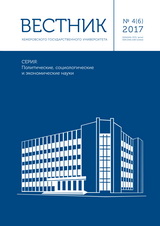The article provides a justification for taking into account the energy factor in assessing the quality of life of households. The result of the study is the conclusion that the provision of social and economic development, which can be estimated by using such a composite indicator as the quality of life of the population (households), should include such parameters as reducing the level of resource consumption and reducing the anthropogenic load on the natural environment. To assess the quality of life of the population (households), it is important to take into account such energy factor as the level of energy saving, which affects environmental and climate change. Increased energy consumption contributes to the pollution of atmospheric air with CO2 and, as a result, to climate change and the occurrence of natural anomalies and environmental disasters. The research involves an analysis of the dynamics of incomes and consumer spending of households (including expenditures on housing and utility services). The analysis allows the authors to conclude that the quality of life of households is reduced due to the outstripping growth of consumer spending over their incomes, which can be explained by a decrease in the efficiency of energy supply. Another reason is an increase in the energy intensity of the housing and communal services due to energy loss caused by poor quality of living quarters. Given the role of the energy factor in assessing the quality of life, the authors use the ecological and energy approach to expand the current methods by including indicators that would assess its impact. The result of the study is an improved methodology for life quality assessment in terms of the energy factor. The article provides an accurate description of the indicators and the calculating procedure. In the opinion of the authors, the use of the ecological and energy approach to life quality assessment and its application for territorial comparisons (countries, regions, cities) will help to justify the mismatch between the growth rates of people’s wellbeing and the resource consumption (energy, biological, etc.).
quality of life of the population, energy consumption, energy efficiency of residential buildings, resource consumption, population welfare, energy factor

















